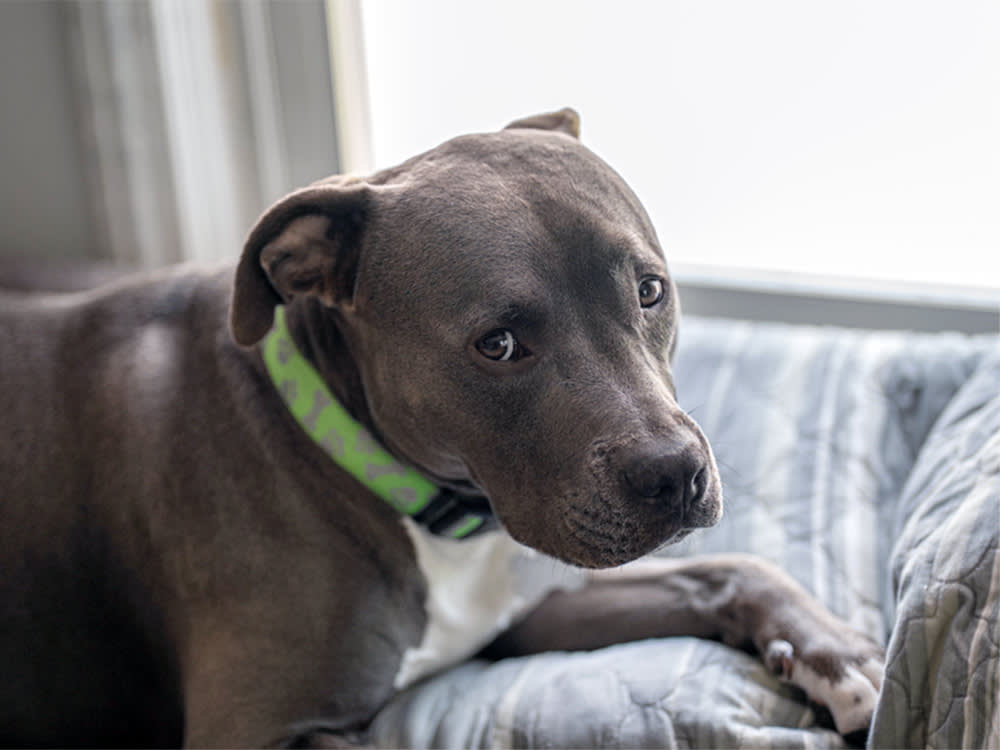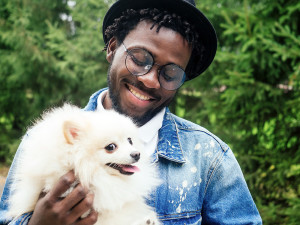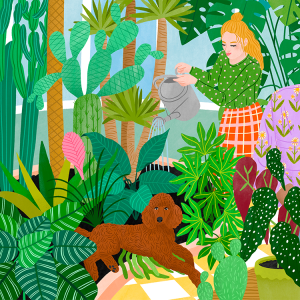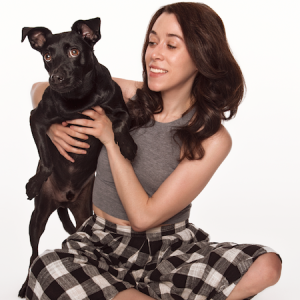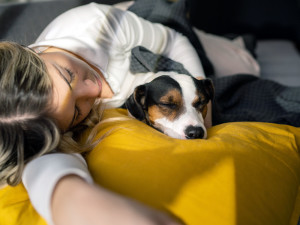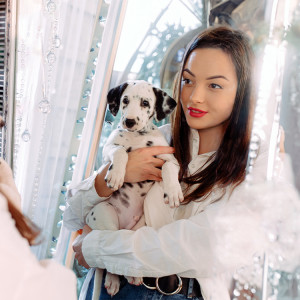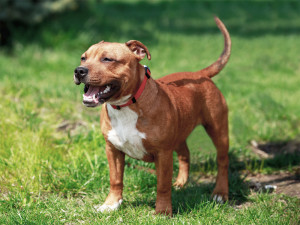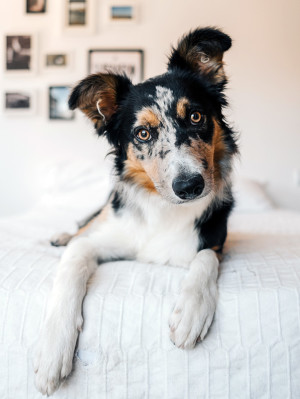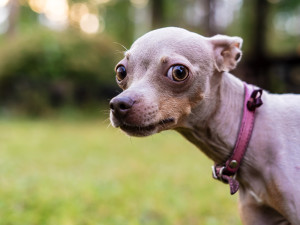No, Your Dog Does Not Feel Guilt—Here’s What Those “Regretful” Looks Really Mean
Your pup doesn’t actually feel bad about eating your pizza.
In J. R. Ackerley’s 1956 classic My Dog Tulip, the author writes about what appears to be a display of guilt from his beloved dog, Tulip, after she accidentally bites him. “We all make mistakes and she was dreadfully sorry,” Ackerley writes. “She rolled over on the grass with all her legs in the air; and later on, when she saw the bandage on my hand, she put herself in the corner, the darkest corner of the bedroom, and stayed there for the rest of the afternoon. One can't do more than that.”
It’s a touching sentiment, and speaks to the bond Ackerley had with his cherished friend. But is it also, um … a completely inaccurate reading of Tulip’s behavioral cues? Research shows that despite their remorseful looks, and despite what all of those “dog shaming” videos on social media might claim to display, it is unlikely your dog feels guilt after doing something wrong. So, what are our dogs actually trying to tell us?
But hold on a second, my dog really does look guilty sometimes.
It’s easy to understand why pet parents believe their dogs feel guilty after doing something they shouldn’t. In videos across YouTubeopens in new tab, Instagramopens in new tab, and TikTokopens in new tab, humans capture their allegedly guilty dogs averting their eyes, cowering, hiding, thumping their tails nervously; basically, they behave a bit like guilty humans might.
To understand why it’s unlikely that, for example, your dog knows they shouldn’t have eaten some of your delicious pizza and now feels shame for having done it, it’s helpful to first know the difference between primary and secondary emotions. “Primary emotions are often thought of as non-learned reactions that are automatically triggered by external or internal cues and are considered to have a long evolutionary history,” Dr. Ljerka Ostojićopens in new tab, a researcher and professor at the University of Rijeka in Croatia, who has studied the perception of guilt in dogs, tells Kinship. These are things like happiness, sadness, and fear, and they have been empirically observed in dogs.
How much do you spend on your pet per year?
Secondary emotions, Ostojić says, require cognitive appraisal of a situation; they’re “thought of as more complex and are considered to involve some form of evaluation, likely following an experience of a primary emotion.” Science so far suggests that dogs do not experience secondary emotions. Guilt, which requires self awareness and is often influenced by societal norms, falls under this umbrella. (Though the belief that dogs feel some secondary emotions is not without debate — jealousy is a secondary emotion, for example, and there is some research that suggests dogs do experience itopens in new tab.)
“Many researchers interpret the ascription of guilt to dogs as anthropomorphism,” Ostojić says; that is, the human tendency to ascribe their own human emotional experience in a given situation to a nonhuman animal or object. She sited a 2015 studyopens in new tab from Christina Brown and Julia McLean that found participants who reported higher levels of feeling guilt themselves were more prone than other participants to interpret their dog’s behaviors after a misdeed as being an indicator of the dog’s guilt.
“I certainly love talking about emotions,” Julie Hecht, an animal behavior researcher, tells Kinship. “It just seems like this one-to-one attribution — that is, ‘I know this is how I would feel and behave, and oh my gosh, my dog is giving me so many clues that we are the same’ — the research does not seem to back it up.” Hecht says these seemingly guilty actions are more in line with appeasement displays, which are behaviors used by social animals to reduce conflict and lessen punishment. Rather than guilt, your dog could be feeling fear.
Research shows seemingly guilty behaviors are more about human influence.
Alexandra Horowitz, director of the Dog Cognition Lab at Barnard College, published a study in 2009 which observed canine behavior after being scolded. In the study, human participants were instructed to tell their dogs not to eat a particular treat. Then, the humans left the room and the dogs were either given the treat, or the treat was taken away.
The humans returned and were told, despite what had actually happened, that their dogs either did or did not eat the treat. The humans who thought their dogs had eaten the treat scolded them, prompting guilty behavior. The trouble is, the guilty behavior that came after a scolding was more prevalent in dogs who had not actually eaten the treat. This shows a lack of connection between knowledge of a misdeed and guilty behavior, and a greater connection between that behavior and human cues (which can be far more subtle than scolding).
Ostojić and Hecht have each co-authored subsequent studies attempting to further discern the relationship between human cues and seemingly guilty canine behavior. Hecht’s 2012 studyopens in new tab tested the theory that some dogs display guilty behaviors before scolding begins, as some humans report they only learn about certain misdeeds because of their dogs’ guilty displays.
After giving dogs the opportunity to break a rule by eating “human” food from a table in their human’s absence, they found that dogs who did eat the food were not more likely to look guilty upon their human’s return than dogs who didn’t. Additionally, they found humans did not have a greater-than-chance ability to determine, based on their dog’s behavior (in the absence of scolding), whether or not they had committed the infraction.
This doesn’t rule out the idea that guilty behavior can precede scolding, but it does suggest that, when it does, the guilty behavior may simply be a result of a dog connecting past punishment with present environmental cues. In an article for Scientific Americanopens in new tab, Hecht cited a 1970s paper from a veterinarian who sought to test this theory. The veterinarian studied a dog who was shredding paper when left alone. He instructed the dog’s human parent to shred paper, leave the dog alone, and then return. Even though the dog hadn’t shred the paper herself, she still acted guilty upon her human’s return, suggesting that she connected the presence of shredded paper with imminent punishment.
Ostojić’s 2015 studyopens in new tab tested whether dogs would show a "guilty look" even when they were not scolded. They tested this by giving some dogs forbidden food in the absence of their guardian, and making it either visible or hidden when the human came back. The results showed that the dogs' behavior didn't change based on whether or not they ate the food, or whether it was visible or not. The study also showed the owners couldn't accurately tell if their dog had eaten the food based on the dog's greeting behavior. Like the other similar studies, the researchers’ findings did not support the idea that the “guilty” look occurs in dogs without a human cue.
It is harmful to believe your dog feels guilt.
Believing your dog can feel guilt can be helpful to a species (human) that often feels most comfortable having someone to blame when something goes wrong. If your dog knew they were doing something they shouldn’t, and that idea is reinforced by guilty behavior, then they are at fault and the resulting punishment is deserved and well-taken. On the other side, believing that they feel guilt can also feel a bit like giving your dog love and empathy, and treating their feelings with respect.
But it isn’t in a dog’s best interest to misunderstand themopens in new tab. In assuming guilt and knowledge of a misdeed, the human excuses themselves from looking into and addressing the root cause of a certain behaviors — be it nervousness, fear, pain, or something else altogether. Hecht says it can lead to the false idea that you and your dog are on the same page, but because you are not, the behavior will continue or even worsen. “For some, depending on so many factors — like what the dog did wrong,” Hecht says, “it might deteriorate the relationship, because the person is not in any way addressing that underlying action.”
When dogs are presumed to know what they’ve done wrong, they aren’t being given the tools to understand how they are expected to behave. If their behavior comes with punishment, they’ve only being given the information that they should simultaneously feel afraid. Like all fear-based trainingopens in new tab, this is not shown to facilitate long term behavioral change, and can cause harm.
Even if a pet parent thinks the researchers have it wrong, and that their dog can feel guilt and learn through that feeling, Ostojić wonders why one would want to allow them to feel those negative emotions, rather than give them the tools to avoid the behavior altogether. “The end question is whether they want to put their dog into a situation in which they are experiencing the negative emotion (whether it is a response to [the human’s] own behavior or an expression of guilt),” she says. “The answer here I hope is a ‘no.’”
For the same reason, she says, she and other researchers in this area have an ethical responsibility to actively discourage pet parents from provoking dogs to exhibit these “guilty” behaviors, “which is commonly done for videos that are then shared across social media platforms.” When doing this, even though it might get a laugh, you’re unnecessarily making your dog experience a negative emotion; whether it be guilt or fear.
“It’s hard to be a dog,” Hecht says, “but they're also very tolerant of us and our shortcomings. This, I would say, is one of our shortcomings.”
